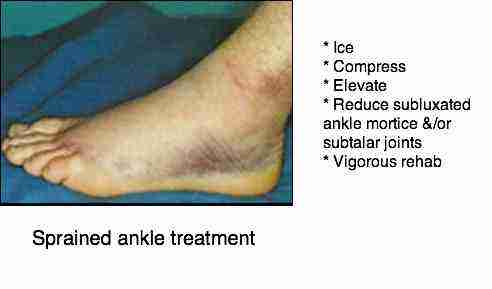
Ankle fractures are one of the most traumatic injuries, an individual can sustain. You accidentally fall and damage your ankle. Then you check your pain and decide: Is it just a sprain or a broken ankle? This scenario often accounts for more than 50% of all orthopedic complaints.
When you bend over to pick something up off the ground, your foot slides off and lands on the floor. This is a normal movement in everyday life; however, you are only seconds away from a broken ankle. It could be caused by a heavy object falling onto your leg. If it's something small, like a piece of glass, that's not too much of a problem. But if you are wearing any type of shoe that supports the arch of your foot, chances are that something fell on your foot and caused damage.
Broken ankles are usually caused by sudden concussion or tension on the joint, such as falling or twisting the ankle. Bones are subjected to sudden stress, causing damage to their structure. A typical fracture occurs in the outermost part of the ankle, called the annulus fibrosus. If this part of the ankle is injured, it is called an external ligament sprain. The ligament is damaged because the tissue around it is torn from the bone or because of pressure on it.
Ankle fractures are commonly referred to as "sprains" traumatic injuries. However, an ankle fracture can also result from another condition, such as a sprain. Sprains, like fractures, are extremely painful. They are likely to cause severe pain throughout the body. per day, even if the injury itself does not cause much harm: you will feel swelling, soreness and / or clicking.
Treatment for both injuries is often very similar. There are some things to avoid while the injury is healing and after you have healed. Avoid things like walking barefoot, spraining your ankle, long walks, and climbing stairs. If you are walking with a walker, make sure you keep your other leg on the walker, as well as the leg with an ankle fracture. Use a splint whenever possible to prevent further injury. If you cannot wear splints, your doctor may recommend an ankle brace or apply ice to the area.

A simple twist-and-fall accident may be just a mild sprain, but if the damage is severe it can be a torn ligament, broken bone or ligament sprain
If you are unsure whether the damage to your foot is minor or serious, see a doctor for a diagnosis. Treatment can vary based on the severity of the injury. If the injury is more serious, treatment can include surgery, immobilization, steroid injections and physical therapy.
Sometimes a minor injury may have no lasting damage and may heal on its own. In such a case, the rest is usually all that is required. In cases where the injury is not serious, you may simply wear a splint and not wear a splint. If you have a history of breaking bones or ankle injuries, you should seek medical attention as soon as possible.
A fracture is a traumatic event. An ankle sprain will usually heal without treatment. An ankle fracture can also be the result of a hard fall or an accident. The most common treatment for a broken bone is rest and/or physical therapy. Surgery is also an option in these cases.
Sometimes bone fractures are difficult to heal. In such cases, surgery may be the only option. For these cases, your physician will give you more information about the fracture. He or she may suggest you do something physical to alleviate the pain, such as lift your heel off the floor. Physical therapy, which involves physical therapy, is another option for many fractures.
Ankle sprains are typically caused by over-exertion. Because you may hurt yourself while playing sports, the body has a tendency to over-stretch the muscles in the ankle, causing the ligaments to stretch. A sprain is the ankle sprain can lead to a dislocation or the ankle being pinched, resulting in pain and swelling.
As with any type of sprain, you should always call your doctor immediately and follow the doctor's recommendation for treatment. A sports injury specialist may be able to assist you with diagnosis, and treatment. Your doctor may suggest the type of splint to be used or you may choose to use an ankle support or even an ankle splint. If you have already had surgery, be sure to notify your doctor or specialist about any problems before you begin physical therapy or any rehabilitation.


